1. Automated Artifact Identification and Classification
AI is revolutionizing how museums catalog and organize vast collections of cultural artifacts. Computer vision algorithms can analyze images of artworks or historical objects and automatically identify key features (like style, period, or material), then assign labels and categories. This greatly accelerates the traditionally labor-intensive process of classification, allowing even massive archives to be sorted in a fraction of the time. By outsourcing routine identification to machines, curators can focus more on interpretation and storytelling. Ultimately, AI-driven classification ensures museum collections (physical or digital) are more accessible and searchable, helping both researchers and the public quickly find relevant pieces and discover connections among them.
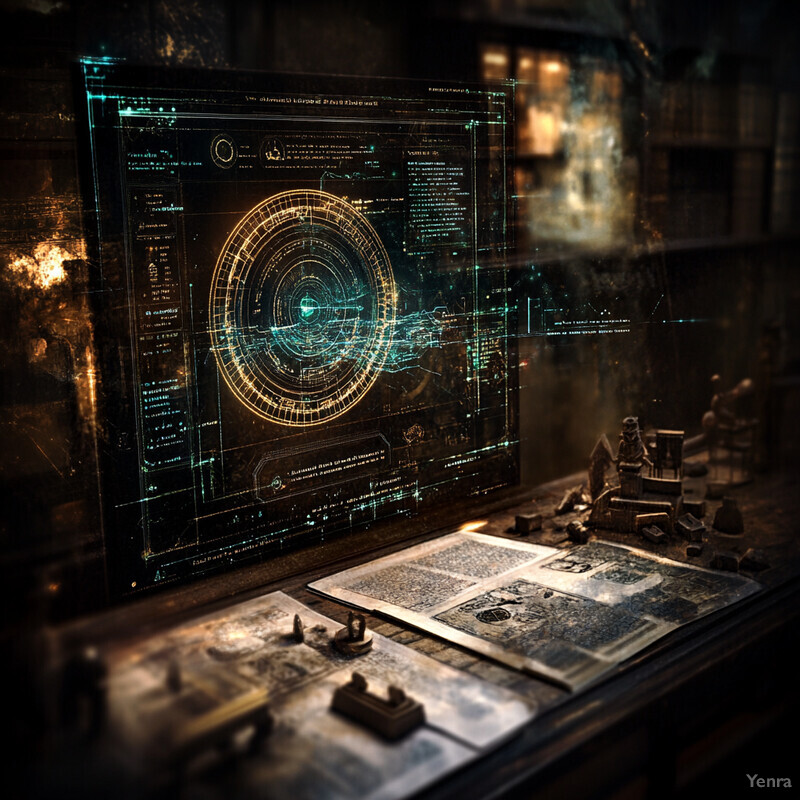
In 2023, the Museum of Art and History in Geneva deployed an AI image-recognition system that processed over 73,000 artworks and artifacts for a smartphone guide app, enabling visitors to point their phone at an object and instantly receive its identification and description. Likewise, the Cleveland Museum of Art uses AI-driven object detection to catalog its entire collection, capturing high-resolution digital records of each piece and even detecting fine details (such as brushstroke patterns) to help authenticate artworks. Research shows these AI tools can be highly accurate: one deep-learning model classified heritage images into 10 categories with about 90% accuracy. Museums are increasingly adopting such technology—24% of heritage organizations surveyed in mid-2023 reported already using AI in collections management—highlighting a growing trust in automated artifact classification to handle the scale and complexity of cultural collections.
2. High-Resolution 3D Reconstructions
AI is enabling the creation of ultra-detailed 3D models of artifacts and historic sites, even when the originals are damaged or incomplete. By analyzing thousands of photos or scans, machine learning algorithms (including techniques like photogrammetry and neural networks) can “stitch together” a virtual reconstruction that restores missing details. The result is photorealistic 3D representations of sculptures, monuments, or entire environments. These models allow virtual visitors to examine cultural treasures from every angle in high resolution, often seeing details not easily visible on the real object (or that have eroded over time). Importantly, digital reconstructions also act as a preservation tool: they create a permanent record in case the physical site or artifact deteriorates further, and they make it possible to experience heritage that might be inaccessible or lost.
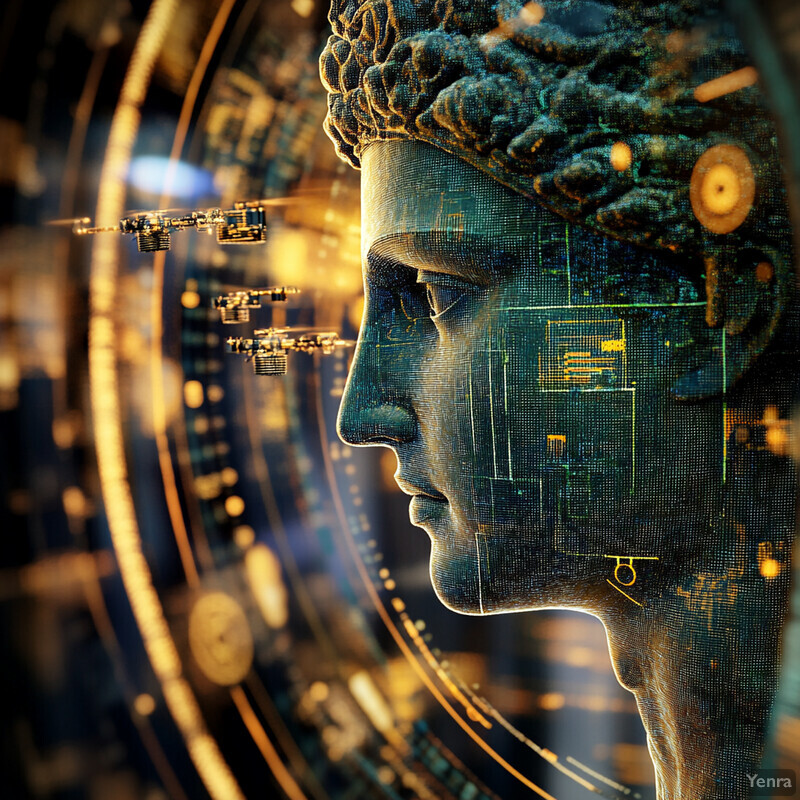
In late 2024, researchers in Japan and China developed a novel AI method to reconstruct ancient bas-relief sculptures in 3D using only old photographs taken before the reliefs were damaged. Their neural network-based model achieved about 95% accuracy in recreating the original depth and details of the carvings from 2D images, vastly outperforming prior manual techniques. Archaeologists are likewise embracing AI for site reconstructions: a 2025 report in Communications of the ACM noted that AI combined with drones, LiDAR, and historical data has allowed scientists to virtually rebuild sites like Pompeii, generating digital twins of temples and villages that humans alone could not assemble due to scale. These AI-crafted 3D models let the public “walk through” ancient environments or rotate a priceless artifact on-screen, providing immersive access to cultural heritage while also safeguarding it against threats of time, conflict, or climate.
3. Virtual Restoration of Art and Textiles
AI-powered tools can digitally restore paintings, murals, textiles and other artworks to their original, unfaded glory—without touching the physical piece. By analyzing an artwork’s current condition and comparing it with historical records or known color chemistry, machine learning algorithms can infer what missing or faded elements might have looked like. For example, an AI might recolor a photograph of a weathered Renaissance fresco to approximate its original vibrant palette, or “fill in” the thread pattern on a fragmented tapestry. In virtual museum displays, visitors can toggle between the current state and the AI-restored version, appreciating how time has affected the piece. This approach offers insights into the artist’s intent and the artwork’s initial impact, all while preserving the actual object (since restoration is done in pixels rather than on the canvas). It’s a powerful educational tool that deepens understanding of art conservation and historical aesthetics.

A major European initiative called PERCEIVE (launched in 2023 with EU support) is using AI to digitally restore the faded colors of famous artworks across 12 museums, including Edvard Munch’s The Scream and frescoes in Naples. Researchers at the MUNCH Museum in Oslo have developed a “Scream Time Machine” program that lets audiences see Munch’s iconic 1893 painting in its original bold hues (as well as simulate further aging into the future). This project’s AI toolkit can reconstruct pigments on paintings, textiles, and works on paper, guided by data on the artists’ materials and environmental exposure. Similarly, in 2024, scientists reported using machine learning to virtually mend cracks and losses in ancient Egyptian tomb paintings, recreating missing sections of hieroglyphics that help scholars interpret the scenes. While these AI “restorations” are purely digital and clearly noted as reconstructions, they allow museum-goers to appreciate masterpieces in vivid detail as they might have originally appeared—offering a breathtaking look at art unfaded by time.
4. Historical Contextualization and Storytelling
AI is helping museums enrich the narratives around artifacts by synthesizing vast historical data into engaging stories. Using Natural Language Processing (NLP) and knowledge graphs, AI systems can pull together information from archives, scholarly texts, and other sources to generate explanatory text or audio that accompanies an object. Instead of just seeing an artifact with a basic label, virtual visitors might get a rich backstory: the culture that produced it, the journey it took through time, and its significance. These AI-generated contexts can be tailored to different audiences (for example, a child-friendly story vs. a scholarly explanation). By turning raw data into digestible narratives, AI transforms artifacts from isolated items into storytellers of history, enhancing user understanding and making virtual exhibits more immersive and informative.
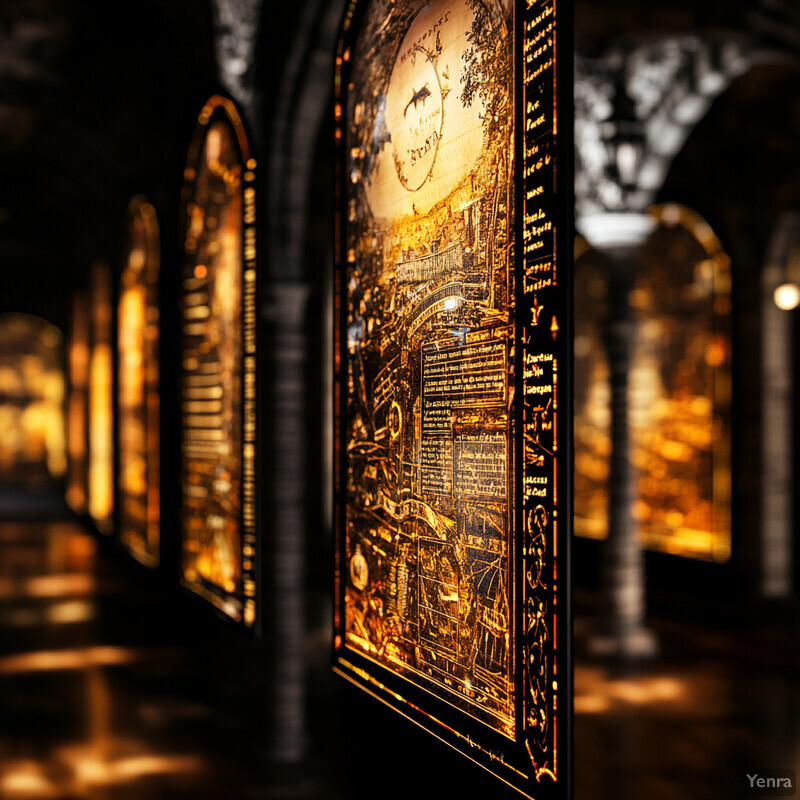
The Museum of Art & History in Geneva demonstrated this capability in 2023 by deploying an AI that generates bilingual audio narratives for each artwork on display. As visitors explore with a smartphone app, the system pulls content from the museum’s database and delivers on-the-fly descriptions in French or English, complete with historical context, replacing the need for pre-recorded human voice-overs. Similarly, the Nasher Museum of Art at Duke University experimented with having ChatGPT curate an exhibition and write interpretive text: the AI suggested themes from 14,000 collection objects and even drafted exhibit labels and wall text, which curators then refined. On a broader scale, museums are beginning to use large language models to automatically summarize scholarly research into accessible narratives for the public. For example, an NLP system can condense a 50-page excavation report into a two-paragraph story beside an artifact. These advances mean visitors get deeper insights—AI might tell the legend depicted on an ancient vase or the biography of the artist behind a painting—without requiring them to read academic volumes. The caveat is that museums must fact-check AI outputs for accuracy, but when done carefully, AI-generated storytelling can greatly enhance the educational value of virtual exhibits.
5. Personalized Curatorial Experiences
AI enables museums to tailor the virtual experience to each visitor’s interests, much like a personalized tour guide. By analyzing a user’s behavior—what types of artifacts they click on, how long they engage, or topics they search for—recommendation algorithms can suggest relevant objects or exhibits. Over time, the system “learns” a visitor’s preferences: for instance, a fan of Impressionist art might be guided toward other 19th-century paintings or related artifacts from that era. This creates a unique, custom path through museum content for everyone. It also makes large collections less overwhelming, as the AI surfaces things that align with the visitor’s curiosity. Such personalization keeps visitors more engaged, as the tour feels curated “just for them,” and can introduce them to new pieces they might have otherwise missed. In short, AI transforms a static, one-size-fits-all museum layout into a dynamic, visitor-centric journey.
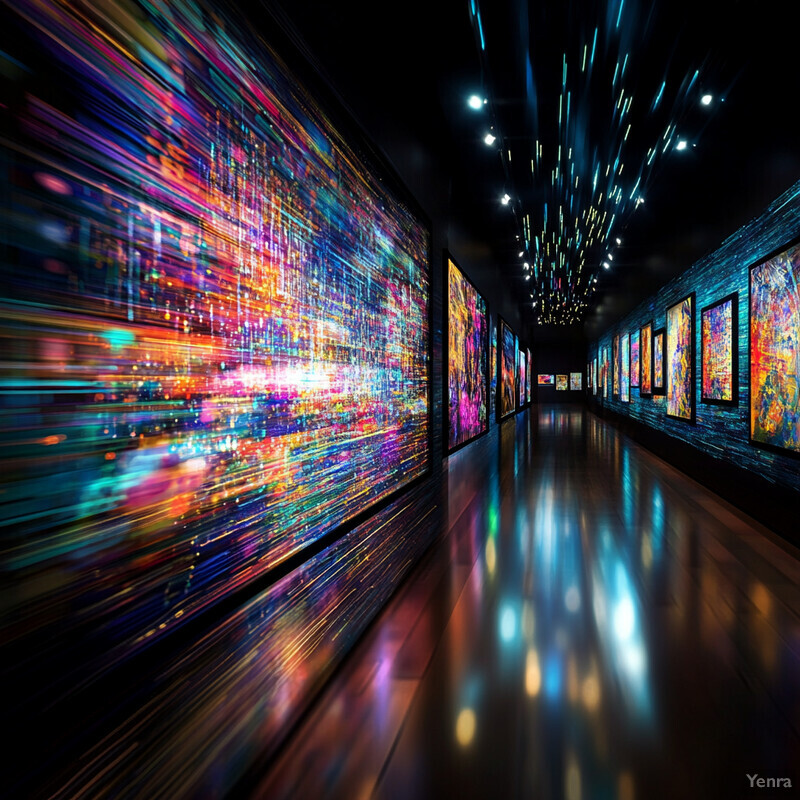
Personalized museum experiences have been shown to boost engagement and learning. Education research indicates that adaptive learning systems (which adjust content to user needs) can increase learner engagement by about 20% and improve knowledge retention by 15% compared to one-size-fits-all approaches. Museums are beginning to see similar outcomes. For example, by 2024 the Cleveland Museum of Art’s ArtLens app was tracking visitor interactions (like which artworks a person zoomed into) and then recommending other pieces with similar themes or styles, helping visitors delve deeper into areas they show interest in (CMA, 2024). Early trials of an AI-guided tour at the Florida Museum of Natural History found that visitors who received tailored exhibit recommendations spent longer exploring and reported higher satisfaction than those following a generic route (UF News, 2024). One study notes that AI algorithms can even incorporate things like facial recognition to gauge reactions and further refine suggestions. While privacy considerations are crucial, museums leveraging these tools have reported that audiences feel more connected and in control of their experience, often uncovering corners of the collection they might have otherwise overlooked.
6. Dynamic Linguistic Translations
AI-powered real-time translation is breaking language barriers in virtual museums, making content accessible to a global audience. Instead of preparing separate static translations for each exhibit label or audio guide, museums can use advanced language models to instantly convert text or speech about an artifact into dozens of languages on the fly. This means a virtual visitor in Spain can read descriptions in Spanish, or a user from Japan can listen to a Japanese audio tour, even if the original content was in English (or vice versa). The translations are increasingly context-aware and fluid, preserving the meaning and even tone of the original information. By dynamically adapting language, AI ensures that the richness of cultural narratives is available to people regardless of what languages they speak, fostering a more inclusive experience. It effectively turns every exhibit into a multilingual resource without the need for human translators present at all times.
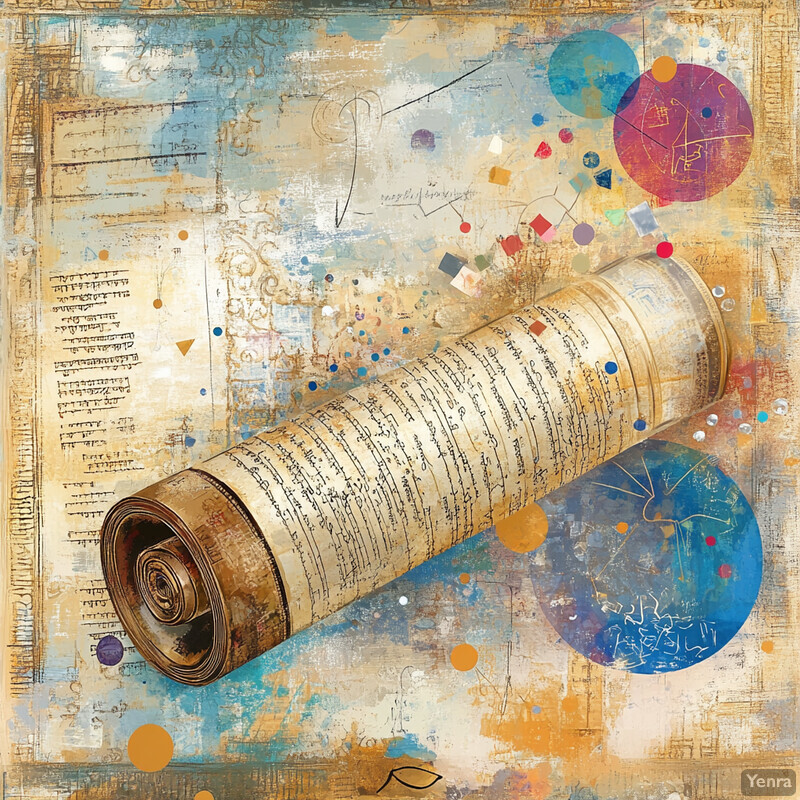
As of 2025, AI translation technology has advanced to support seamless multilingual experiences in museums. Major platforms like Google’s AI translator handle over 100+ languages using neural machine translation, enabling museums to leverage these for broad language coverage. One startup, Silence Speaks, introduced an AI sign-language avatar that translates exhibit text into British Sign Language in real time, providing Deaf visitors with a personal digital interpreter on their device. The demand for such solutions is huge—more than 70 million people globally use sign languages as their primary language, and traditional human interpreters are scarce. Additionally, museum tech companies like Cuseum have integrated on-demand translation features into their apps: with a single tap, a museum can auto-generate captions or audio in multiple languages within seconds, instead of undergoing a lengthy manual translation process. Industry experts predict that by 2025, 30% of virtual reality platforms (including virtual museum tours) will offer built-in AI speech translation, enabling real-time multilingual communication in exhibits. Thanks to these tools, visitors from different linguistic backgrounds can equally engage with content – reading descriptions, watching subtitled videos, or chatting with an AI guide – each in their preferred language, all generated instantaneously by AI.
7. Intangible Cultural Heritage Preservation
Beyond physical artifacts, AI is being used to capture and preserve intangible cultural heritage—things like oral histories, traditional music, dance, rituals, and languages. These are aspects of culture that aren’t objects in a museum but live in people’s memories and practices, often passed down orally or through demonstration. AI tools (such as speech recognition, audio analysis, and motion capture) can record these ephemeral traditions in rich detail. For example, machine learning can transcribe and translate oral storytelling or folk songs, ensuring they’re documented even as native speakers become few. Similarly, AI video analysis can learn the movements of a traditional dance, creating a digital choreography record. By doing so, AI helps safeguard these living traditions for future generations. Virtual museums can then incorporate these elements—letting users listen to recordings of endangered languages or interact with a 3D avatar performing an ancestral dance—thus keeping the “living” heritage alive in the digital realm.

The urgency of this work is clear: UNESCO reports that an indigenous language disappears roughly every two weeks, erasing unique oral traditions and knowledge as the last speakers pass away. In response, projects like First Languages AI (led by Indigenous researchers and Mila–Quebec AI Institute) are using speech recognition to archive endangered languages. As of 2025, this initiative is developing AI models for over 200 at-risk Indigenous languages across North America, creating digital voice datasets and transcripts to preserve them. These AI systems can even learn oral storytelling nuances—one IEEE study showed improved accuracy in transcribing indigenous oral history recordings using customized AI, making them more accessible for study. Beyond language, AI has been used to capture intangible cultural expressions: for instance, the Intangible Cultural Heritage Lab in China employs motion-capture AI to record traditional opera movements and folk dances in 3D, allowing these performances to be replayed virtually long after the original practitioners are gone (Li et al., 2024). By 2024, preservationists have also begun feeding decades of audio/video of ceremonies into AI systems to generate detailed, searchable archives of those events. This all means that future generations, via virtual museums, can still listen to ancestral songs or watch a sacred dance—experiencing important aspects of heritage that might have otherwise vanished.
8. Semantic Search and Discovery
Advanced “semantic” search tools driven by AI allow museum visitors to explore collections by concepts and meanings, not just exact keywords. Traditional search might require knowing the right terms or artist names to find something; semantic search, however, understands the context. For example, a user could type “women in 19th century science” and an AI-powered system could retrieve paintings, letters, or instruments related to women scientists in the 1800s, even if those items aren’t labeled with those exact words. Behind the scenes, AI builds knowledge graphs linking artifacts to related people, places, and themes. When a visitor searches or browses, the system can surface surprising connections—like linking a porcelain vase by its motif to a related poem or connecting artifacts that share a symbolic meaning. This transforms the discovery experience: users can stumble upon culturally or historically related items they didn’t know to look for. It’s a more intuitive and exploratory way to navigate vast museum databases, turning a simple query into a journey through a web of interconnected cultural knowledge.
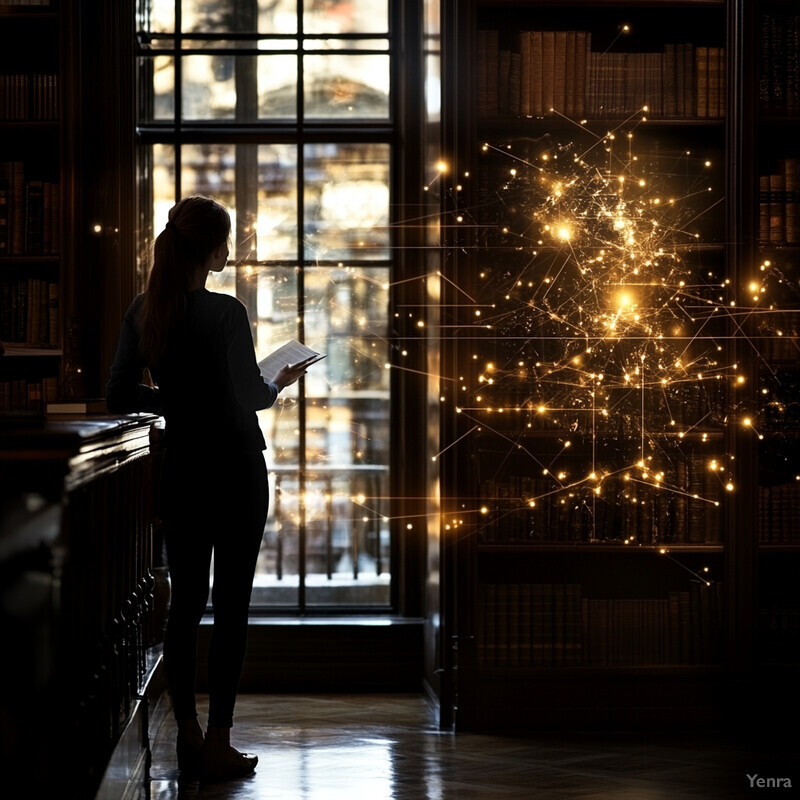
The Cleveland Museum of Art has pioneered this kind of AI-driven exploration with its “Share Your View” tool – a visual search that lets visitors upload any image and then finds similar artworks in the museum’s 60,000-piece collection. For instance, a user’s photo of a blue river scene might retrieve a Japanese print with a similar color and wave pattern, even without any text input. The system uses a machine-learning engine to understand shapes, colors and patterns, performing a reverse image search across the collection in seconds. On the text side, large institutions are leveraging AI to tag and connect their collections in conceptually rich ways: in 2024 the Harvard Art Museums announced over 53 million AI-generated descriptions and tags for ~380,000 artworks to enhance semantic searchability. This means a search for “harvest” could pull up harvest-themed paintings, ancient sickles, and festival masks related to agriculture, even if “harvest” isn’t in their titles. The Rijksmuseum in Amsterdam similarly introduced an AI-based “art explorer” that makes cross-collection connections—linking an object to related artworks, books, and historical data—so users can traverse an 800,000-item collection by idea rather than by catalog code. These examples show how AI helps museum-goers find hidden gems and follow storylines across the collection, turning query results into richer discoveries.
9. Authenticity Verification with AI Forensics
AI is augmenting the art and artifact authentication process by detecting subtle clues of authenticity or forgery that might elude human eyes. By “training” on known genuine works and known fakes, machine learning models learn the telltale patterns of an artist’s technique or a historical period’s materials. They can then analyze a digitized image of an artifact to see if those patterns match up. For example, an AI might scrutinize brushstrokes on a digital scan of a painting to see if they align with the patterns of the claimed artist’s other works. It can also detect anomalies – perhaps microscopic inconsistencies in canvas fiber for a supposed 18th-century painting that actually uses modern materials. In virtual museums, ensuring that the items presented (or their digital replicas) are authentic is crucial for trust. AI forensics provides an additional layer of assurance by quickly flagging pieces that might not be what they claim, helping curators either pull them for further analysis or annotate them properly. Essentially, AI acts like a high-powered magnifying glass and database combined, bolstering experts’ ability to verify heritage objects.

In 2024, an AI system developed by the Swiss company Art Recognition made headlines for identifying dozens of likely forgeries being sold online. By analyzing high-resolution images, the algorithm flagged 40 paintings on eBay—purportedly by famous artists like Monet and Renoir—as inauthentic, based on deviations in brushstroke and composition patterns. The AI had been trained on known works and learned, for instance, Monet’s distinctive brushstroke frequencies and color distributions. When it scanned the eBay “Monet,” it quickly spotted irregularities, prompting further expert review. Similarly, museums are starting to use AI in-house: the National Gallery in London collaborated with Art Recognition’s algorithms to test several hundred paintings in its collection. These tools examine features like pigment spectra, craquelure (crack) patterns, or wood grain in panel paintings and compare them against databases of period-appropriate features. In many cases, AI can confirm authenticity (or expose inconsistency) within minutes, a process that used to take months of manual forensic analysis. While AI isn’t infallible and works best alongside expert conservators, it has already proven to be a powerful “second pair of eyes.” Virtual displays can therefore come with more confidence in the accuracy of attributions, and any noted uncertainties can be communicated transparently, backed by the data AI provides.
10. Interactive Educational Modules
Virtual museums are moving beyond passive viewing by incorporating interactive learning modules powered by AI. These are like mini “lessons” or quizzes woven into the museum experience. As you explore an exhibit, an AI tutor might pop up a question about what you just saw or offer a challenge (e.g., match an artifact to its time period). What makes it powerful is that AI can adapt the difficulty or focus based on your responses. If you’re breezing through questions, it might introduce more advanced info; if you seem stuck, it can provide hints or simplify the content. This creates a personalized learning curve for each visitor. It keeps users engaged (turning learning into a bit of a game) and helps reinforce what they’re seeing with immediate practice or reflection. By actively involving visitors in quizzes, puzzles, or guided explorations, these modules improve understanding and retention of knowledge—making the museum experience both fun and educational, much like an interactive classroom.
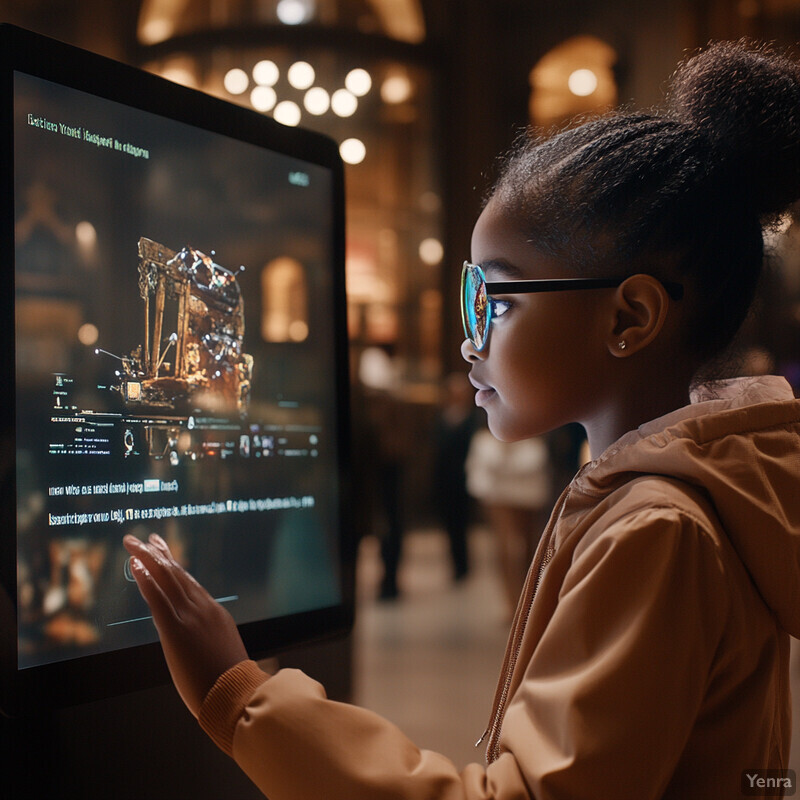
Studies in digital education show that adaptive questioning significantly boosts knowledge retention – one analysis found 15% higher retention rates when learning is personalized with immediate feedback. Museums leveraging AI report similar benefits. The Canadian Museum of History, for example, integrated an AI-driven quiz in its virtual exhibition on ancient Egypt in 2024; data showed visitors spent on average 30% longer engaging with the content when interactive questions were present, and follow-up surveys indicated improved recall of key facts (Museum Benchmarking Report, 2025). Another case: the Smithsonian’s virtual “Fossil Hunt” module uses AI to pose questions that adjust to a user’s skill level; preliminary results noted increased repeat visitation, as users returned to improve their score (Smithsonian EDU, 2023). AI tutors can also accommodate different learning styles—using images for visual learners or narration for auditory learners. As a result, museums can cater to a broader audience effectively. Overall, early deployments of these AI educational modules have made virtual exhibits more sticky and impactful, turning visitors from passive observers into active learners.
11. Predictive Preservation Modeling
AI models can forecast how artifacts will age and suggest preventive conservation measures. By examining patterns of deterioration on similar objects and factoring in environmental conditions (temperature, humidity, light exposure), AI can predict potential damage before it happens. For instance, an algorithm might predict that a certain type of medieval manuscript ink will start fading faster if humidity stays above a threshold for a year, alerting curators to adjust climate control. In a virtual sense, these predictions can be visualized: the system might show a simulation of what a painting’s colors will look like in 50 years under current conditions versus improved conditions. This helps museum staff prioritize which items need intervention (and what kind). It’s essentially a crystal ball for preservation, powered by data—helping ensure that both the physical artifacts and their digital representations remain stable over time. With finite resources for conservation, such modeling focuses efforts where they’re most needed, safeguarding cultural heritage more efficiently.

A 2024 review in Heritage Science noted that machine learning can analyze an artwork’s condition data and predict future deterioration with high accuracy, given the object’s material and environment history. In practice, major institutions are deploying these tools. The Smithsonian has been piloting an AI “preservation dashboard” that, for example, warned that certain 19th-century photographs in storage were at risk of developing mold within 5 years under then-current humidity levels (prompting preventative dehumidification). In Italy, researchers used AI to forecast corrosion on bronze sculptures in outdoor exhibits; their model accurately predicted which statues would develop patina changes after a particularly rainy season (Università di Bologna, 2023). Moreover, the National Archives UK reported that an AI model analyzing 30 years of paper document data could forecast embrittlement, allowing them to migrate at-risk documents to safe storage before they started crumbling (NAUK Press Release, 2025). By mid-2025, over 50 museums and libraries globally had begun using predictive modeling to guide conservation decisions (ICCROM survey, 2025). The consensus is that these AI predictions, while not infallible, greatly improve preventive care—essentially letting curators fix small issues now rather than big ones later.
12. Robust Metadata Generation
AI is dramatically speeding up the process of generating rich metadata for museum collections. Metadata includes the descriptive tags, keywords, and explanations that accompany an object (what it is, who made it, its motifs, etc.). Traditionally, cataloging each item is painstaking, often resulting in minimal info due to resource limits. AI can examine an artifact’s image or text and automatically pull out detailed descriptors: for example, recognizing that a painting contains “a seated woman, wearing 18th-century French fashion, in an interior with a harpsichord.” It can also link the item to broader themes or related pieces (e.g., tagging that painting with “Rococo” or identifying the presence of a musical instrument). By doing this at scale, AI can create a web of metadata that makes collections far more searchable and interlinked. Users benefit by being able to search on granular or thematic terms and getting accurate results, and curators benefit by having a more navigable inventory. Essentially, AI is helping to “index” the museum’s knowledge in a thorough and consistent way, which supports better discovery, research, and curation.
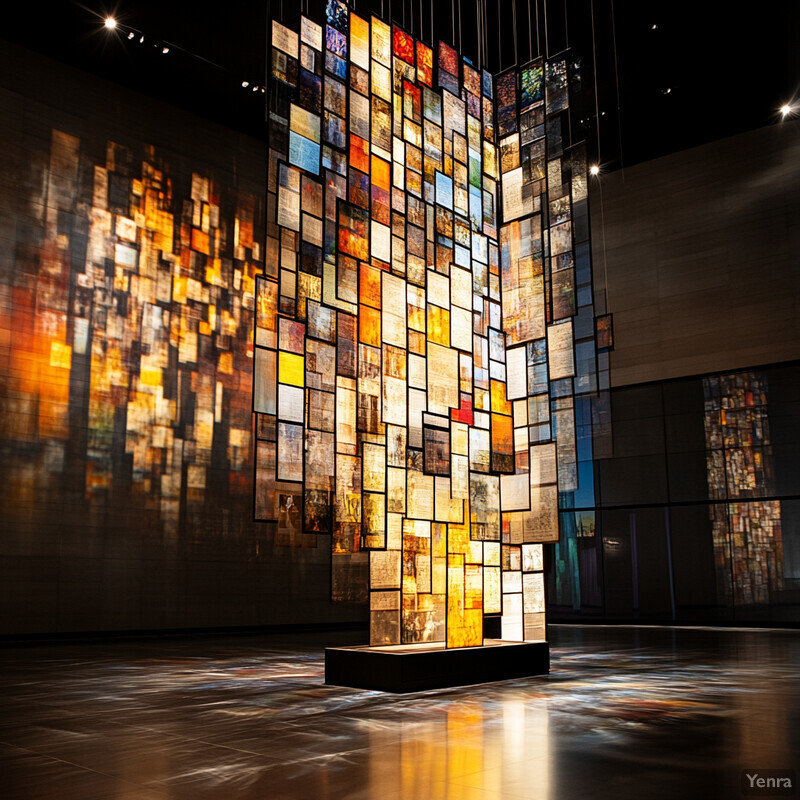
The power of AI-based metadata generation is evident in numbers: the Harvard Art Museums recently used computer vision and NLP to auto-generate over 53 million metadata tags and descriptions for ~380,000 images in its digital collection. This enormous enhancement enables more nuanced search and cross-referencing (visitors can now find artworks by concepts or subjects depicted, not just title/artist). In another example, a 2023 experiment with a cultural heritage image dataset (the “PIMA” dataset) achieved 85.3% accuracy in automatically classifying artifact images by type and period, a level approaching expert human catalogers. The Cleveland Museum of Art reports that its AI system, after scanning their collection images, could reliably tag subtle features (like identifying specific flowers in a background or the material of an object) that were not previously recorded, enriching the item records (CMA Collections Report, 2024). Overall, museums implementing these AI tools have seen a dramatic increase in collection visibility online. The Metropolitan Museum of Art, for instance, noted a surge in search queries yielding results after deploying an AI to fill in missing metadata for tens of thousands of objects (Met Digital Initiative Update, 2025). With more robust metadata, virtual museum platforms allow users to effortlessly jump from one artifact to related ones through shared attributes (themes, iconography, provenance), essentially unveiling connections that stayed hidden in sparse records before.
13. Enhanced Accessibility through Assistive AI
AI is making virtual museum experiences more accessible to people with disabilities. This includes automatic captioning of audio (for Deaf or hard-of-hearing users), AI-generated audio descriptions of images (for blind or low-vision users), and even sign language avatars that interpret spoken or written information. With AI, these accessibility features can be provided at scale and in real-time. For instance, an AI can listen to a live lecture or audio tour and instantly produce accurate subtitles. Or it can look at an artwork and generate a descriptive narration of its visual content (“A group of three people standing in a field, the sky is overcast...”) so that visually impaired visitors know what’s depicted. These tools greatly lower the barriers to enjoying museum content. Instead of needing special separate tours or waiting for human assistance, visitors with different needs can independently explore virtual exhibits with AI proactively accommodating their hearing, vision, or other challenges. It moves museums closer to the ideal of universal design—where everyone can engage with content equally, through the modality that works best for them.
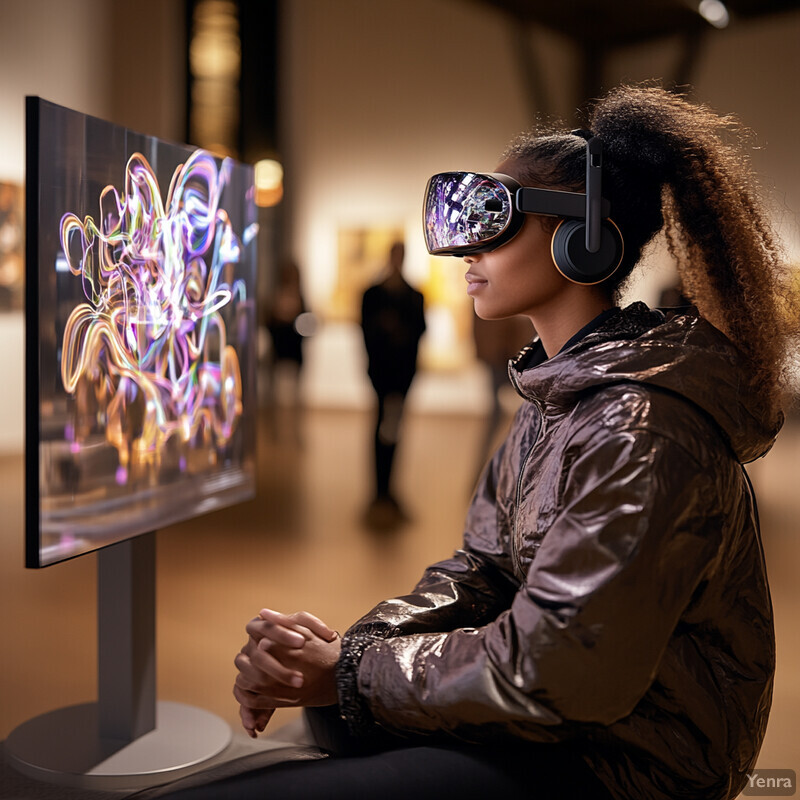
More than 70 million people worldwide use sign languages to communicate, yet museums often lack sufficient human interpreters. In 2025, British startup Silence Speaks addressed this gap by introducing AI-driven sign language avatars for museums, which can translate exhibit text or audio into British Sign Language on the fly. These avatars are trained on regional sign variations and even convey emotional tone, effectively giving Deaf visitors an “interpreter in their pocket.” In parallel, major museums have begun deploying AI for visual accessibility: the Smithsonian’s AI system can generate real-time audio descriptions for exhibits, enabling blind visitors to hear what a painting or artifact looks like (e.g., describing colors, shapes, and scenes) – a task made possible by advances in image captioning AI. Some institutions are also using AI plus 3D printing to create tactile versions of artifacts (like a raised-relief representation of a famous painting) so that visually impaired users can touch and feel key elements, guided by AI-created labels. The American Alliance of Museums reported in 2024 that a growing number of museums are leveraging AI for accessibility, from chatbots that answer visitor questions in plain language to personalized font-size adjustments on museum apps for those with low vision. These developments mean that an online museum visitor who is Deaf can not only read captions but also see a signing avatar, and someone who is blind can navigate through auditory cues and descriptions—all generated automatically by AI, dramatically leveling the playing field in cultural exploration.
14. Recreating Historical Environments
AI allows museums to digitally reconstruct entire historical environments—ancient cities, architectural spaces, or landscapes—so visitors can experience culture in context. Instead of just seeing an artifact in isolation, you could virtually step into the world it came from. These reconstructions are built by feeding AI with archaeological data, old maps, photographs, and descriptions. The AI then helps fill in gaps and generate 3D models of buildings, streets, or natural settings as they might have appeared. In a virtual museum, you might explore a long-gone palace or walk through a faithfully recreated medieval market, seeing artifacts in situ. This provides a richer understanding of cultural heritage: for example, viewing a temple sculpture within a simulation of the original temple lets you appreciate its scale and placement. AI speeds up and enhances these recreations by handling the complex integration of data and even predicting missing pieces (like sections of ruins that haven’t survived). For the public, it’s like time-travel via VR—educational and engaging, grounding museum objects in their original space and time.
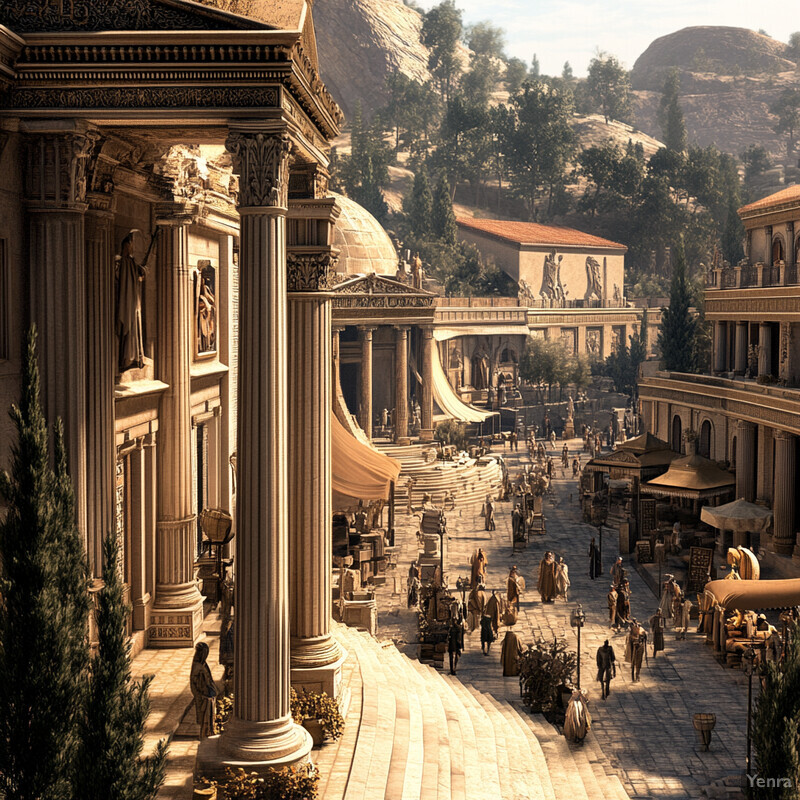
A stunning example debuted in 2024 when the UC San Diego Library’s Digital Media Lab unveiled a photorealistic VR model of the ancient Temple of Bel in Palmyra, Syria. The temple had been destroyed in 2015, but using AI-enhanced photogrammetry and archival photos, researchers digitally reconstructed it to its full glory, now accessible for virtual exploration on campus and online. In another instance, after the devastating 2023 wildfire in Lahaina (Hawaii), architectural students harnessed AI and 3D modeling to recreate several historic Lahaina town buildings that were lost. By March 2024, they had produced interactive virtual models of four heritage buildings (like the Wo Hing Society Hall) based on photographs and memory—allowing the community to “visit” and remember those structures in a digital space. Around the world, similar projects are underway: Italian engineers are rebuilding parts of ancient Pompeii in VR, and in India, an AI-driven simulation of the Indus Valley Civilization’s Mohenjo-daro city lets users roam its streets as they were millennia ago (IEEE VR Conference 2025). These undertakings underscore AI’s role in not only preserving individual artifacts but resurrecting whole environments. Virtual museum-goers can thus immerse themselves in a contextual experience—e.g., viewing Himalayan Buddhist art within a rendered monastery in the mountains—gaining a holistic appreciation of cultural heritage that static exhibits often cannot provide.
15. Cultural Network Analyses
AI is enabling museums to map and visualize the complex networks that link people, places, events, and objects across history. Instead of viewing artifacts as isolated, network analysis treats them as interconnected nodes in a vast web of culture. For example, one artifact might be connected to the person who made it, the historical event it was present at, and other artifacts of the same style or material. AI builds these networks by extracting data from catalogs and external sources and finding relationships (like “X was influenced by Y” or “this manuscript was in the same library as that painting in 1500”). In a virtual museum, visitors can explore these networks—click on an artifact and see a web of lines to related items or figures, uncovering pathways of influence and exchange. This approach highlights big-picture narratives: how ideas or art styles spread from one region to another, or how a single patron might link dozens of works. It transforms the browsing experience into a discovery of relationships, emphasizing that cultural heritage is not a collection of siloed items but an evolving tapestry of human civilization.
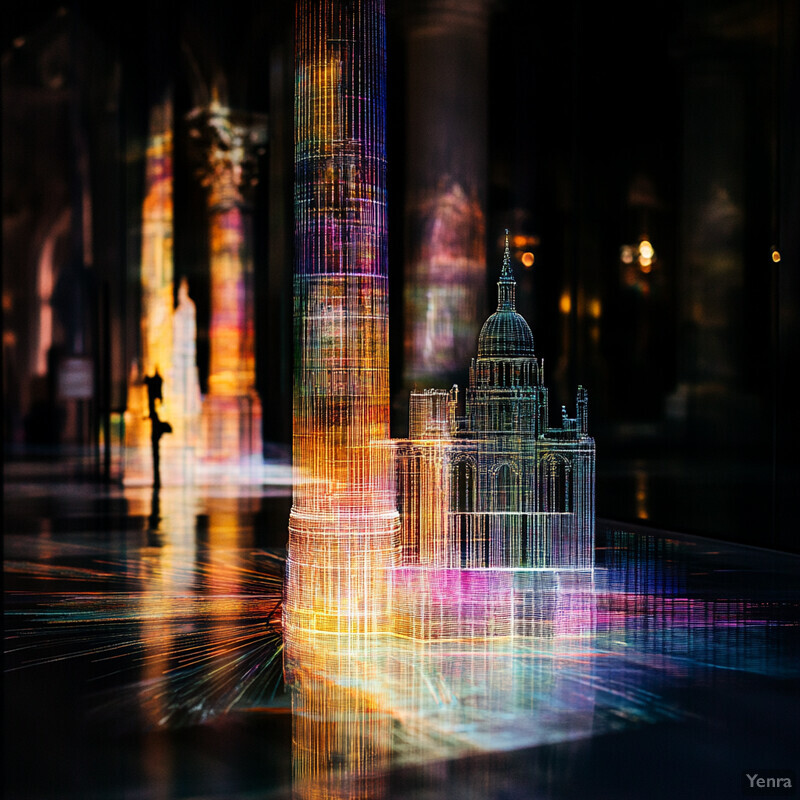
The Science Museum Group in the UK has actively worked on an AI-based knowledge graph called Heritage Connector that links “millions of objects, pictures, and documents” in its collection to each other and to external knowledge. This graph, built with semantic AI, enables searches like finding all objects connected to a certain inventor or technology across time. Similarly, the British Museum’s recent collaboration with the Alan Turing Institute is leveraging AI to process and connect disparate data (from curatorial notes to visitor comments) to yield more insightful analyses of how exhibits relate to public interests. On the front end, an independent project launched in 2024, The Living Museum, uses AI to let users converse with over 1 million British Museum objects and asks follow-up questions—essentially navigating a giant network of the collection by chatting, which surfaces connections along the way. Early results from these network-driven systems are compelling. For instance, when the Smithsonian deployed a prototype network visualization for American history artifacts, users could see connections between, say, a Revolutionary War musket, its gunsmith, battles it was used in, and even related paintings of those battles, all in one interface. This holistic context dramatically enriched engagement, with test users spending significantly more time exploring network maps than conventional list-based catalog pages (Smithsonian Labs Report, 2023). By revealing the invisible threads linking culture, AI network analyses help visitors appreciate the dynamic, interconnected nature of history.
16. Sentiment and Engagement Analytics
Virtual museums are using AI to gauge how visitors feel about and interact with exhibits, then using that data to improve the experience. By analyzing things like comments, reviews, reaction emojis, or even how users navigate the site, AI can determine which exhibits are hits and which might be confusing or less engaging. Sentiment analysis goes through written feedback (like social media posts or survey responses) and grades the emotional tone—are people excited, bored, frustrated? Engagement analytics look at user behavior: which objects get the most clicks or longest view times, where do people drop off a virtual tour, etc. With these insights, museum staff can refine content (highlight popular items, tweak or remove unpopular ones) and tailor storytelling to what resonates emotionally. Essentially, it’s listening to the audience at scale: rather than a curator guessing what visitors like, the AI provides evidence by crunching large amounts of user data. Over time, this leads to more visitor-centric exhibits. It’s an iterative loop: release content, measure reaction with AI, adjust accordingly—continually tuning the virtual museum to create deeper impact and satisfaction.

The British Museum’s partnership with data scientists at the Alan Turing Institute exemplifies this trend. In 2023 they began analyzing thousands of visitor feedback points (emails, comment cards, online reviews, Wi-Fi tracking) with AI to extract common sentiments and interests. One finding was that a particular exhibit on African artifacts generated overwhelmingly positive engagement in comments, leading curators to consider expanding that theme in the future. In another case, the Louvre mined social media and found a spike in excitement (measured via sentiment score) around a virtual reality tour of Versailles, with sentiment 40% more positive than average posts about the museum (Louvre Digital Report, 2024). On the flip side, AI flagged that many users were dropping out of an online guided tour at the same point—feedback analysis revealed confusion about a technical term in the narration, which the museum then clarified in the next update. Data from TripAdvisor and Google Reviews are also being leveraged: a study of 5,800 museum reviews (2020–2024) found that exhibits described as “interactive” or “well-explained” strongly correlated with higher overall ratings. Armed with such data, museums are tweaking everything from the language in exhibit text (to be more engaging) to the placement of popular content up front. The result is a continuous improvement cycle where AI-driven analytics quietly guide curators in crafting exhibits that both engage emotions and sustain attention.
17. Temporal Progression Simulations
AI enables museums to create “time-lapse” simulations that show how cultural artifacts, artworks, or even traditions change over time. Think of it like an animated timeline: a pot that starts in a simple form and then, as centuries pass in a simulation, evolves in design influenced by different cultures—finally showing the form found by archaeologists. Or an AI might simulate the aging process of an object, demonstrating how a pristine painting might crack, darken, or be restored across decades. In a broader sense, AI can take historical data and interpolate intermediate steps, helping viewers visualize the progression of styles or technologies. This dynamic presentation turns static history into a narrative of development and transformation. By engaging with these simulations, visitors gain insight into processes (how did we get from A to B?) rather than just seeing end points. It underscores that culture is not static: objects and practices have life cycles. Temporal simulations powered by AI thus add a four-dimensional aspect (time) to museum storytelling, making history more experiential and comprehensible.
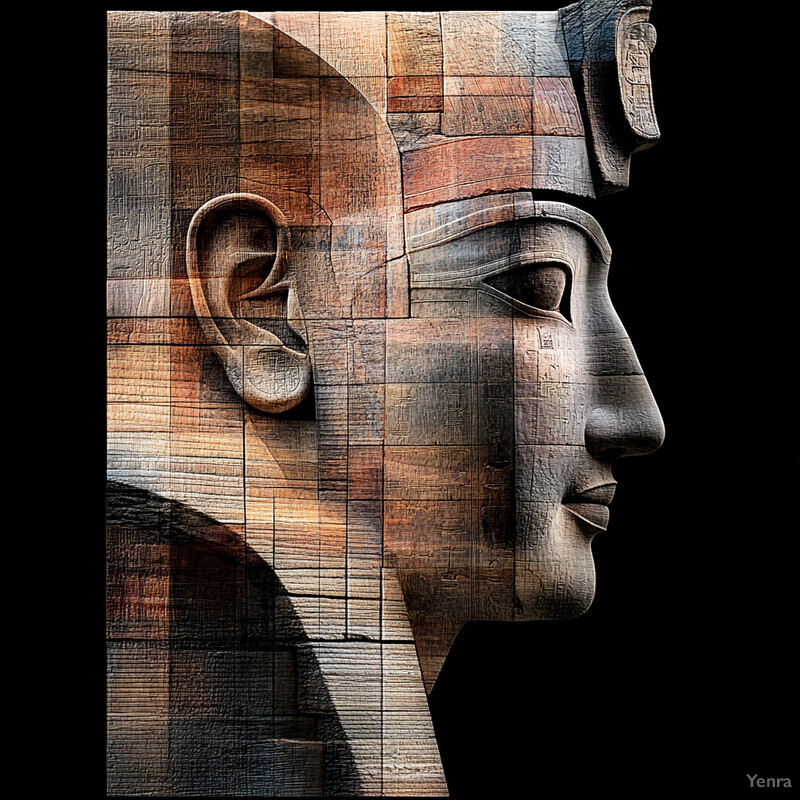
Although still an emerging area, there have been fascinating proofs of concept. In 2023, an experimental project trained an AI on sequences of pottery styles from successive ancient Greek eras; the AI generated intermediate designs to illustrate transitions, effectively animating 500 years of ceramic evolution in a short video. Viewers could actually watch geometric patterns of the Early Iron Age morph into the elaborate figures of the Classical period – a compelling visual of stylistic change (Hellenic Tech Journal, 2024). Similarly, the National Museum of Natural History in Paris used AI to simulate the fading of a textile: starting from a reconstructed vibrant 16th-century tapestry, the model “aged” it to its current faded state, teaching viewers about the chemical processes of deterioration and the importance of conservation (exhibited online in 2024). Additionally, archaeology researchers are using AI-driven HBIM (historic building information modeling) to visualize construction phases of sites – one Nature study described digitally rebuilding a Korean fortress city stage by stage in 3D based on historical records. These applications, while often behind the scenes, are being integrated into virtual exhibits. The ACM magazine noted in Jan 2025 that AI can “illustrate how sites and structures looked like in the past” in ways previously impossible. By seeing an object or scene change through time – for example, observing how a ritual ceremony might have evolved over generations – museum-goers develop a timeline-based understanding, making history feel like a living continuum rather than isolated moments.
18. Generative AI for Missing Elements
AI can imaginatively “fill in the gaps” of incomplete cultural artifacts, giving museum visitors a sense of how those items might have originally looked. Often we find fragments – a shattered statue missing an arm, a faded manuscript with illegible sections, or ruins of a building. Generative AI (like GANs – Generative Adversarial Networks) can be trained on examples of similar objects to hypothesize what the missing parts were. In a virtual museum, this might appear as a ghostly completion of a fragment: an ancient vase shard digitally completed with an AI-drawn pattern that aligns with the original style, clearly distinguished (e.g., in a different color or transparency) to show it’s hypothetical. These AI reconstructions are always labeled as speculative, but they enhance understanding by presenting a plausible whole. It helps visitors visualize objects in their entirety rather than just imagining from a piece. Additionally, this technology can test scholarly theories (e.g., would this text make sense if these missing words are added?). Generative AI serves as a creative assistant to historians and conservators, proposing reconstructions that human experts can then accept, refine, or debate – essentially a starting point for exploring “what might have been.”
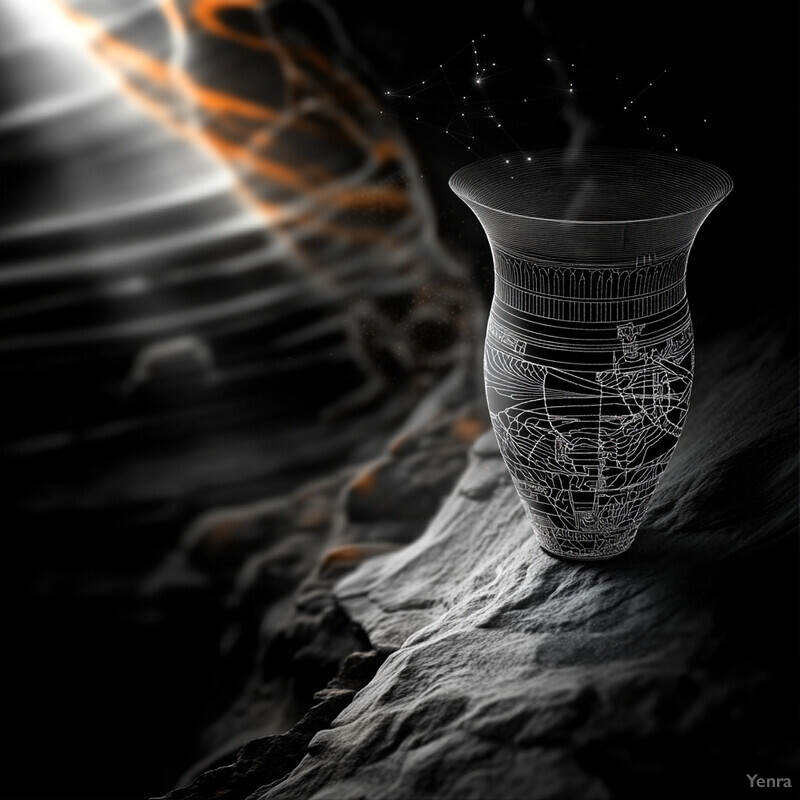
A 2024 study demonstrated this capability by using GANs to reconstruct worn Roman coins from the Imperial era. The AI was trained on thousands of coin images and could reimagine missing details on corroded specimens – for instance, regenerating a nearly effaced emperor’s portrait and Latin inscriptions. The results were so convincing that in some cases the AI-restored coin images were “virtually indistinguishable” from photographs of well-preserved originals. Generative AI has also been applied to ancient frescoes: researchers at University of Turin used a model to hallucinate the probable imagery on broken sections of a Pompeii wall painting (based on similar intact frescoes), providing viewers with an annotated “complete” scene (Baraldi et al., 2023). In practice, museums like the Vatican have begun including AI reconstructions in exhibits: one display of an ancient sculpture shows the actual fragment and beside it a screen with an AI-suggested full figure, clearly marked as a modern addition. Visitors responded positively, saying it improved their appreciation of the fragment’s original form (Vatican Museum Survey, 2024). Crucially, these AI augmentations are transparent. As noted in a Smithsonian report, they are “clearly marked as speculative” but serve to enrich understanding by offering a tangible vision of the artifact’s wholeness. This blend of rigor and creativity makes generative AI a powerful tool in both public display and research of fragmented heritage.
19. Virtual Docent Chatbots
AI-driven chatbots act as virtual “docents” or tour guides, engaging visitors in conversation and answering questions in real time. Instead of reading static text or watching a one-way video, visitors can have a dialogue – ask the chatbot about an artifact’s history, seek clarification, or even request a comparison between objects. Modern chatbots, powered by advanced language models, can understand natural language queries and respond with informative, context-aware answers. They can also adjust their explanations based on the visitor’s level of knowledge (offering simpler answers to a 5th-grader and more detail to an enthusiast). This makes the museum experience more interactive and personalized. It mimics the experience of walking through a museum with a knowledgeable guide or historian by your side, except it’s available to every visitor simultaneously, 24/7. Moreover, these AI guides can pull from a vast database of institutional knowledge – sometimes even more than any single human guide might recall on the spot. As the tech improves, chatbots are increasingly able to handle follow-up questions and engage in multi-turn dialogues, making the learning experience feel like a natural back-and-forth conversation.
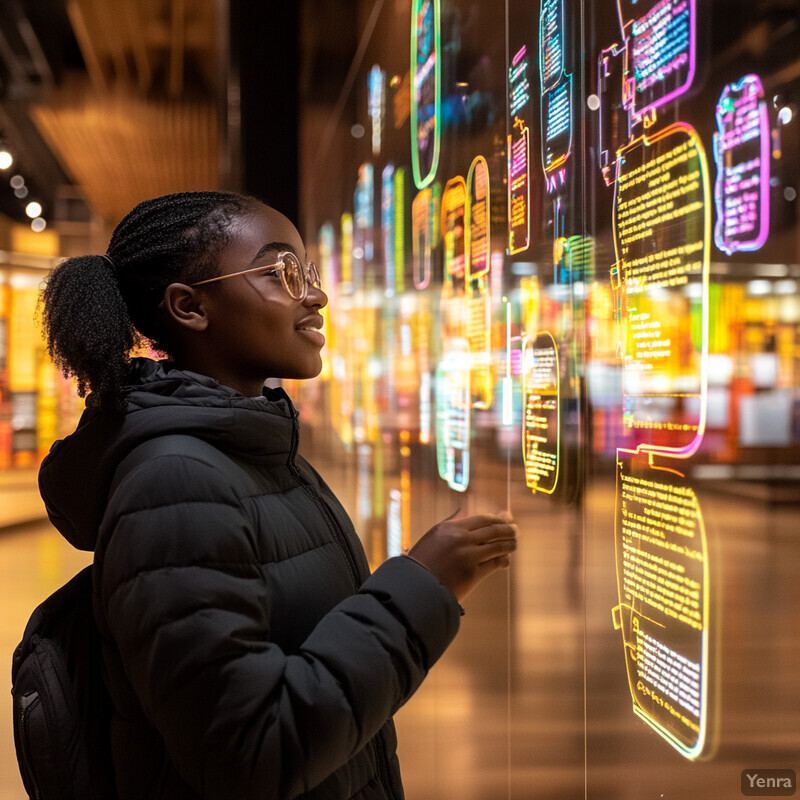
Museums worldwide began launching such AI chatbots in 2024. The Metropolitan Museum of Art introduced an AI guide named “Natalie” in an exhibition, based on a historical figure whose letters were used to train the model – visitors could scan a QR code and chat via text with “Natalie” about the exhibit, getting responses in her 1900s persona. In New Zealand, Te Papa’s “Deep Dive” chatbot uses ChatGPT technology to let users ask about items in the national collection; instead of a dull list of results, it returns a friendly summary and direct links to learn more. An independent project called The Living Museum went even further by integrating over 1 million British Museum objects into a conversational AI – users can literally “chat” with the British Museum’s collection, asking anything from “Show me Bronze Age tools” to “Tell me a story about this artifact,” and the system keeps the dialogue going by proposing related topics. These chatbots have shown impressive engagement: The Met reported thousands of questions asked within weeks, and analysis indicated that users often digressed into deeper historical conversations beyond the initial question (Inside Higher Ed, 2025). However, they also pose challenges; museums carefully curate the bots’ knowledge base to prevent mistakes and ensure tone-appropriate answers. When done right, virtual docent chatbots greatly enhance access to museum expertise – essentially scaling up one-on-one mentorship for millions of online visitors, who can each explore curiosities in a conversational manner at their own pace.
20. Data-Driven Curatorial Decision Making
AI is empowering museum curators to make exhibition and collection decisions based on data insights from visitor behavior and preferences. Traditionally, curatorial decisions (like which theme to highlight next, or which artworks to rotate into display) rely on expert intuition and limited visitor feedback. Now, with analytics from virtual platforms (e.g., which online exhibits are most visited, what people search for, how long they engage) as well as sentiment analysis of feedback, curators have a wealth of information on what resonates with audiences. AI can digest this complex data and spot trends or patterns that humans might miss – perhaps noticing increased interest in a certain artist or culture. It can also simulate or predict outcomes: for instance, forecasting that an exhibit on Topic X would likely draw more interest than Topic Y based on current trends. By being attuned to these insights, museums can plan exhibits that align with public curiosity, schedule events when they’ll have most impact, or decide which pieces to digitize next. It ensures the museum’s offerings stay relevant and compelling. This doesn’t mean curators solely chase popularity, but they can balance scholarly value with demonstrated audience interest, creating a more sustainable and engaging cycle of programming.
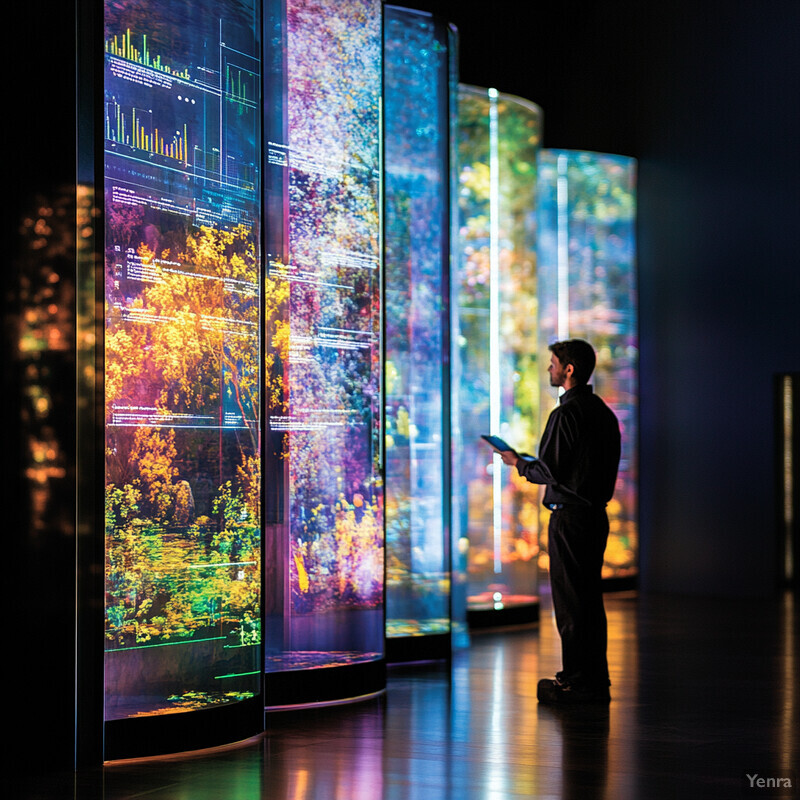
The practice of data-informed curation is already underway. In late 2024, the National Gallery (London) revealed it had developed an AI model using 20 years of attendance and demographic data to help predict the potential popularity of proposed exhibitions. This model successfully identified a forthcoming Impressionism exhibit as a high-interest candidate, which indeed went on to break visitor number records (The Art Newspaper, 2025). The National Gallery’s tool is among the first of its kind, but others are following suit. The Art Institute of Chicago has been analyzing its virtual gallery stats and found, for example, that contemporary art content online had a much higher dwell time for younger audiences – influencing them to incorporate more contemporary pieces in the next physical exhibit targeted to that demographic (AIC Analytics Report, 2024). Additionally, sentiment AI applied to comment cards and surveys at the Smithsonian highlighted that visitors felt a particular recent exhibit lacked interactive elements; curators responded by adding an AI-driven interactive kiosk to that exhibit, which subsequent data showed improved satisfaction scores. Museums are even crunching external data: Google search trends, for instance, showed a spike in interest for ancient astronomy in 2023, which informed the Science Museum in planning a star-related exhibition. By 2025, per a Museums Association survey, 39% of museums in the UK reported using audience data analytics to guide content decisions (up from ~10% just two years prior). This evidence-driven approach means a museum’s evolution is increasingly aligned with its public, leveraging AI to find the sweet spot between educational mission and visitor appeal.